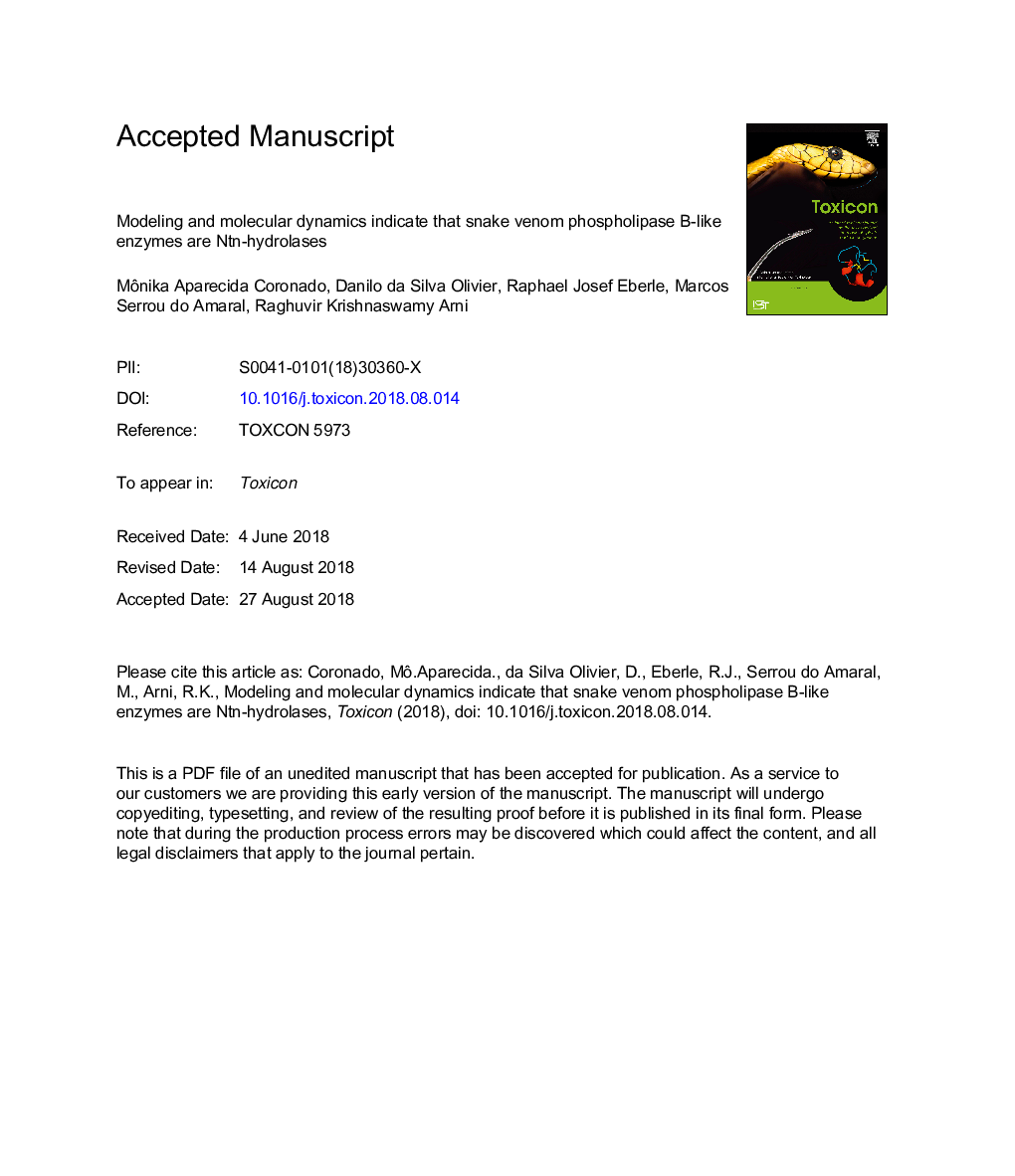| Article ID | Journal | Published Year | Pages | File Type |
|---|---|---|---|---|
| 10137114 | Toxicon | 2018 | 22 Pages |
Abstract
Phospholipase-B-like (SVPLB-like) enzymes are present in relatively small amounts in a number of venoms, however, their biological function and mechanisms of action are un-clear. A three-dimensional model of the SVPLB-like enzyme from Crotalus adamanteus was generated by homology modeling based on the crystal structures of bovine Ntn-hydrolyases and the modeled protein possesses conserved domains characteristic of Ntn-hydrolases. Molecular dynamics simulations indicate that activation by autocatalytic cleavage results in the removal of 25â¯amino acids which increases accessibility to the active site. SVPLB-like enzymes possess a highly reactive cysteine and are hence amidases that to belong to the N-terminal nucleophile (Ntn) hydrolase family. The Ntn-hydrolases (N-terminal nucleophile) form a superfamily of diverse enzymes that are activated autocatalytically; wherein the N-terminal catalytic nucleophile is implicated in the cleavage of the amide bond.
Related Topics
Life Sciences
Biochemistry, Genetics and Molecular Biology
Biochemistry, Genetics and Molecular Biology (General)
Authors
Mônika Aparecida Coronado, Danilo da Silva Olivier, Raphael Josef Eberle, Marcos Serrou do Amaral, Raghuvir Krishnaswamy Arni,
